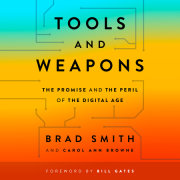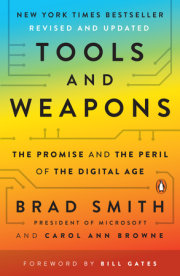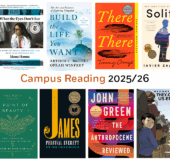Introduction
The Cloud: The World's Filing Cabinet
Civilization has always run on data.
Human history began when people developed the ability to speak. With the invention of language, people could share their ideas, experiences, wants, and needs.
Progress accelerated as people developed the ability to write. Ideas spread more easily and accurately not just from person to per son, but from place to place.
Then came the spark that created the flame of knowledge: the ability to store, retrieve, and share what people had written. A hall mark of the ancient world became the construction of libraries.1 These archives of documents and books meant that people could communi cate more readily not just across space, but across time, passing information from one generation to the next. Centuries later, when Johannes Gutenberg invented the mechanical printing press, the flame became a fire that empowered writers and readers alike.
That fire would sweep the world. The ensuing centuries produced an explosion in commerce that was both cause and conse quence of increasing communication. By the early twentieth century, every office needed a facility to store documents. Rooms were filled with filing cabinets.
While data has always been important to society, it has never played the role it does today. Even when trade slows or economies falter, data continues to grow at a steady pace. Some say that data has become the oil of the twentyfirst century. But that understates the reality. A century ago, automobiles, airplanes, and many trains ran on oil. Today, every aspect of human life is fueled by data. When it comes to modern civilization, data is more like the air we breathe than the oil we burn.
Unlike oil, data has become a renewable resource that we humans can create ourselves. This decade will end with almost 25 times as much digital data as when it began. With artificial intelligence, or AI, we’re doing more with data than ever before.
We call the digital infrastructure that supports this the cloud. While its name sounds soft and fluffy, in truth the cloud is a fortress. Every time you look something up on your smartphone, you pull data from a mammoth data center—a modernday marvel that almost no one gets to step inside.
But if you’re lucky enough to visit a data center, you’ll better un derstand how the world now works.
One of the best places to see the inner workings of the cloud is the world’s capital of apples. The tiny town of Quincy, Washington, sits roughly 150 miles east of Seattle off Interstate 90. Its location is no accident. Quincy is in the center of the state’s agricultural basin, perched near a steep gorge carved for millennia by the wide and roll ing Columbia River, the largest waterway in the western United States. The town is powered by a network of hydroelectric plants, including the Grand Coulee Dam, the largest power station in the United States. It’s an ideal setting for what has become the world’s biggest consumer of electricity, the modern data center.
A few blocks off Quincy’s main street, you’ll find a series of non descript buildings secured by tall fences and walls. Some are marked by the logos of today’s tech companies; others have no identification at all. The largest of these facilities is called the Columbia Data Cen ter, which is owned by Microsoft.
It’s thrilling—and a bit eerie—to take in the sheer size of a data center. Our facilities in Quincy are no longer just a single building. They fill two data center campuses with more than twenty buildings, totaling two million square feet. Each building is the size of two foot ball fields and is big enough to house two large commercial airplanes. This collection of buildings is home to hundreds of thousands of server computers and millions of hard disks, each of which is replaced with faster, more efficient models every three years.
The best way to get a sense of the scale of a data center is to walk from its outer edge to its center. Sitting outside the walls of each building are some of the world’s largest electrical generators, ready to power up within seconds to ensure the data center doesn’t skip a beat if the region’s electrical grid goes down. Each generator stands more than twenty feet high and can power the equivalent of more than two thousand homes. The generators are connected to diesel fuel tanks that can keep the data center running off the grid for fortyeight hours, with refueling arrangements in place to keep the operations up well beyond if ever needed. In our newer operations, like the one in Cheyenne, Wyoming, the generators run on cleaner natural gas and provide backup power to the region’s grid. Dozens of these huge generators stand next to the data center buildings, ready in case there is a local outage from the hydroelectric power supplied by the Grand Coulee Dam.
Inside each building, a string of large secure rooms operate as electrical substations, typically pulling power from the electrical grid at 230,000 volts before reducing it to 240 volts to power the data center’s computers. These substation rooms are lined with rows of sixfoot racks, each connecting five hundred or more batteries that look like what you’d find under the hood of your car. Every door to the room is bulletproof and every wall is fireproof, so a fire can’t spread from one room to another. A typical data center building has four or more of these rooms, and depending on the configuration, the building may house as many as five thousand batteries. They serve two purposes. First, electricity from the grid flows through the racks, keeping the batteries charged and circumventing a potential electri cal spike, so the flow of electricity to the computers remains smooth and constant. And in the event of a power outage, the batteries will keep the data center operating until the generators start up.
Through another set of bulletproof doors and fireproof walls, an other airportstyle metal detector manned by two uniformed guards stands between you and the inner sanctum of the complex. Only fulltime Microsoft employees with their names on a preapproved list can go any farther. As you enter a small receiving room, a steel door closes behind you. You wait, locked inside as security staff look you over through a camera before opening the next bulletproof door.
Finally, you enter a cavernous room, a temple to the information age and cornerstone of our digital lives. A hushed hum welcomes you into the nerve center containing floortoceiling racks filled with computers, lined up in a formation that extends beyond your line of sight. This massive library of steel and circuits contains servers each identical in footprint but containing its own unique volume of data. It is the digital world’s filing cabinet.
Somewhere in one of these rooms in one of these buildings, there are data files that belong to you. They have the email you wrote this morning, the document you worked on last night, and the photo you took yesterday afternoon. They also likely contain personal in formation from your bank, doctor, and employer. The files occupy just a tiny sliver of a hard drive on one of these thousands and thou sands of computers. Each file is encrypted, meaning that the information is encoded so that only authorized users of that data can read it.
Each data center building contains multiple rooms like this, sealed off from one another in case of fire. Each set of computers is connected to three power sources within the building. And each row is designed to recirculate throughout the building the heat given off by its computers to reduce the need for heating and hence electrical demand in the winter.
As you leave the server room, you endure the entire security routine yet again. Off come your shoes and then your belt. Just as you pause and consider the fact that you don’t have to endure this to leave an airport, your host reminds you that there is security in both directions for a reason. Microsoft wants to ensure that no one can copy data on a thumb drive or steal a hard disk with someone’s personal data. Even the hard disks themselves leave through a special exit. When it’s time to replace them, their data is copied to a new com puter and the files are erased. Then the retired hard disk goes through the huge metal equivalent of a shredding machine.
In some ways, the most remarkable feature is saved for the end of the tour. Your guide explains that each data center region has another set of buildings like this one, so the data of a business, government, or nonprofit can constantly be backed up somewhere else. This way, if there is an earthquake, hurricane, or some other natural or man made disaster, the second data center will step in to keep your cloud service operating smoothly. As we found when an earthquake rocked northern Japan, our data center in southern Japan ensured there was no interruption of service.
Today Microsoft owns, operates, and leases data centers of all sizes in more than 100 locations in more than 20 countries (and growing), delivering 200 online services and supporting more than a billion customers in more than 140 markets.
When I joined Microsoft in 1993, one didn’t need much capital to start a software company. Bill Gates and Paul Allen, our two cofound ers, were the latest in a line of tech developers who had launched their companies from a garage or a college dorm room. The point was that the creation of software didn’t require a lot of money. A good computer, a small savings account, and a willingness to eat a lot of pizza were enough to get you started.
We saw this again and again as Microsoft grew from a tiny startup to the multinational it is today. In 2004, we looked to acquire an anti spyware software company called Giant Company Software. When our team reached out to them, we called the published telephone number that provided technical support. When the caller from Mi crosoft asked to be transferred to the company’s CEO, the phone was simply handed to the only other employee, who happened to sit across the desk. Not surprisingly, the acquisition negotiation pro gressed quickly.
I can’t help but think about Giant Company Software when I visit one of our data centers. You can still create a new software app the way Bill and Paul got started. Opensource developers do it all the time. But providing the platforms needed for cloud computing at a global scale? That’s a different story. As I walk among the thousands of blinking computers, racks of batteries, and enormous generators, it feels like more than a different era. It seems like a different planet. Data center campuses cost hundreds of millions of dollars to build. And once construction ends, the work to maintain and upgrade the facility begins. Sites are expanded, and servers, hard drives, and batteries are upgraded or swapped for newer and more efficient equip ment. A data center is never done.
In many ways, the modern data center sits at the center of the new digital era that the world has entered. Its massive accumulation of data, storage, and computing power has created an unprecedented platform for progress across the economies of the world. And it has unleashed many of the most challenging issues of our time. How do we strike the right balance between public safety, individual conve nience, and personal privacy in this new era? How do we protect ourselves from cyberattacks that are using this technology to disrupt our countries, businesses, or personal lives? How do we manage the economic effects that are now rippling across our communities? Are we creating a world that will have jobs for our children? Are we creat ing a world we can even control?
The answers to all these questions need to start with a better appreciation for how technology is changing, based in part on under standing how it has changed in the past.
Since the dawn of time, any tool can be used for good or ill. Even a broom can be used to sweep the floor or hit someone over the head. The more powerful the tool, the greater the benefit or damage it can cause. While sweeping digital transformation holds great promise, the world has turned information technology into both a powerful tool and a formidable weapon.
Increasingly this new technology era has ushered in a new age of anxiety. This tension is the most pronounced in the world’s democ racies. Wracked by unease about immigration, trade, and income in equality, these nations increasingly confront populist and nationalist fissures that result in part from seismic technology shifts. Technolo gy’s benefits aren’t distributed evenly, and the nature and speed of change is challenging individuals, communities, and entire nations.
Democratic societies collectively confront greater challenges than they’ve faced in almost a century, and in some cases other countries are using technology itself to exploit this vulnerability.
This book examines these issues from the cockpit of one of the world’s largest technology companies. It tells the story of a tech sec tor trying to come to terms with forces that are bigger than any one company or even the entire industry. In so doing, it tells a story not just about trends and ideas, but about people, decisions, and actions to address a rapidly changing world.
It’s an unfolding drama that we at Microsoft sometimes see from a different vantage point. Two decades ago, we were thrust into the heart of what might be considered modern information technology’s first collision with the world. In the United States, the Department of Justice and twenty states brought an antitrust lawsuit and sought to break Microsoft into pieces. Governments in other countries fol lowed with their own cases. Competition officials concluded that the Windows operating system was too important to be left unregu lated.
While we successfully defended against the breakup of the com pany, it was a difficult, bruising, and even painful experience. When I was appointed the company’s general counsel in 2002, it became my job to hammer out the equivalent of peace treaties with govern ments around the world and companies across the tech sector. It took almost a decade,6 and we made more than our share of mistakes. Given my role, I personally was responsible in some way for almost all of them.
But we emerged from the challenges both older and wiser. We learned that we needed to look in the mirror and see what others saw in us and not just what we wanted to see in ourselves. It was like being in the first class to graduate from a new school. We weren’t necessarily first in the class, but we had the benefit of getting through school before everyone else.
Today’s technology issues are far broader and deeper than they were twenty years ago. We’ve reached a critical inflection point for both technology and society—a time that beckons with opportunity but that also calls for urgent steps to address pressing problems.
As a result, like Microsoft two decades ago, the tech sector will need to change. The time has come to recognize a basic but vital tenet: When your technology changes the world, you bear a responsi bility to help address the world that you have helped create. This might seem uncontroversial, but not in a sector long focused obses sively on rapid growth, and sometimes on disruption as an end in it self. In short, companies that create technology must accept greater responsibility for the future.
But another tenet is equally important: The tech sector cannot address these challenges by itself. The world needs a mixture of self regulation and government action. Here too there are heightened im plications for the world’s democracies, in part because they are the most dependent on sustaining a broad economic and social consensus at a time when technology is such a disruptive force. More than ever, it seems difficult for many democratic governments to summon the will to act. But this is a time when democratic governments must move forward with new policies and programs—separately, with each other, and in a new form of collaboration with the tech sector itself. Put simply, governments need to move faster and start to catch up with the pace of technology.
These challenges come without a playbook, but there are none theless important insights that can be learned and applied from the past. Technological change has rippled around the world in mul tiple waves since the first industrial revolution began in England’s Midlands in the mid 1700s. For every current challenge that seems unprecedented, there is often a historical counterpart that, while dis tinct, has insights for our day. This book speaks to the opportunities and challenges of the future in part by drawing upon the lessons of the past—with thoughts about how we can learn from them.
Ultimately, these questions involve technology and its implica tions for our jobs, our security, and the world’s most fundamental human rights. We need to reconcile an era of rapid technological change with traditional and even timeless values. To achieve this goal, we must ensure that innovation continues but does so in a way that makes technology and the companies that create it subject to demo cratic societies and our collective capacity to define our destiny.
Copyright © 2019 by Brad Smith. All rights reserved. No part of this excerpt may be reproduced or reprinted without permission in writing from the publisher.








